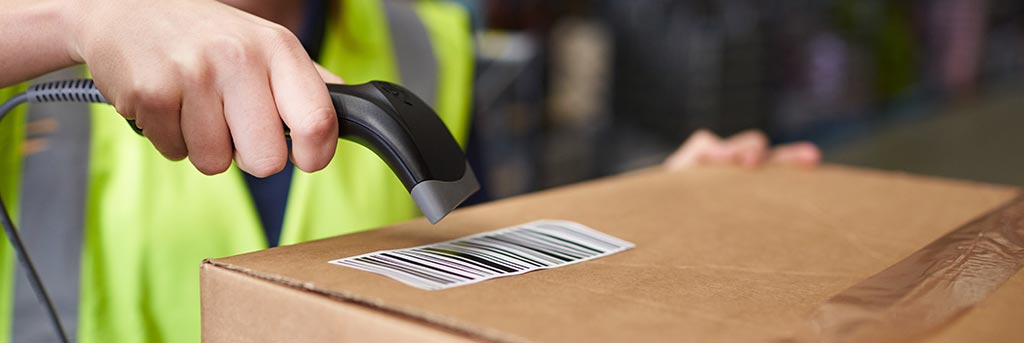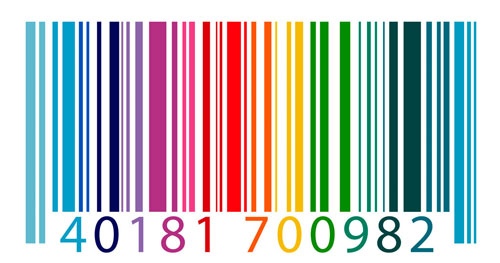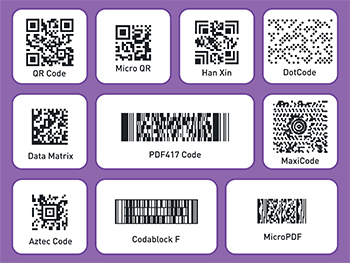Barcode System for Small Business 101
Built For



When small businesses are unsure if barcoding is right for them, it is beneficial to first assess the Whys and Whats before proceeding to the Hows. Most small businesses realize the ROI of a barcode system within months of introduction and reap the benefits for the years to come.

The barcode – drawn first in the sand, later pressed against a pack of Wrigley gum, and now, found nearly anywhere, whether on a product, used in an advertisement, within a phone app, or wrapped around a hospital patient’s wrist.
Barcodes are machine-readable images containing data relevant to the item where the barcode is printed or attached, acting as a medium for quick data transference. A traditional, one-dimensional barcode is a linear display of black and white lines varying in width and spacing, and usually include alphanumeric characters. A two-dimensional barcode is comprised of overlapping symbols and shapes, and often contains more data per unit area than a one-dimensional barcode.
Since the introduction of using a barcode system for small business as a new method for automatically transferring identifying data accurately and efficiently, the applications of these little data displays have become wildly diversified and can be found in use nearly anywhere you look.
A Barcode System for a Small Business that Changed Everything
Remember back in 1995 when Amazon was merely an online bookseller? How did an online bookseller manage to not only dominate, but shape, the entire trajectory of eCommerce as we know it today? The barcode – specifically, the ISBN (International Standard Book Number) – drove Jeff Bezos’ decision to make books Amazon’s initial product. Bezos didn’t accidentally stumble upon the undeniable success and proliferation of his eCommerce marketplace. He understood three things:
- Books were the largest category of barcoded products in the world.
- To achieve initial success, Amazon needed to become THE go-to distributor for a constantly in-demand, universal product.
- The ISBN meant books already succeeded where other product categories failed due to the extremely low risk of purchase inaccuracies, for customers and Amazon alike.
And that’s how “Earth’s Biggest Bookstore” came to be.
Barcode System for Small Business
Barcodes are so ubiquitous in the 21st century that simply building a business around a barcoded product category no longer provides the unique foundation upon which Amazon was built. However, the same reasoning applies – implementing a barcode system for your small business is still a powerful way to improve operations, increase cashflow, and grow.
Barcode System for Small Business: Why?

A good way to assess your potential barcode needs, is to first think about the multitude of ways others use barcodes.
- Government-sponsored industries such as the military, law enforcement, and emergency services are becoming increasingly more reliant on barcode systems for tracking equipment, materials, and tools.
- Hospitals employ barcodes on patient wrist bands, medical staff ID tags, medication bottles, personal item bags, and of course, on all assets and equipment within the hospital. Hospitals depend on barcoding predominantly for ensuring the safety of patients and the integrity of data.
- Big box retailers like Amazon, Walmart, and Target rely on barcoding to track products within their stores and optimize their warehouses and as a means of communication throughout their supply chains. A barcode system between a business and its suppliers means virtual communication never stops, regardless of location, time zones, and language barriers.
For an inventory-driven small business, a barcode system can be transformative – but why?
Here are few “Why” keywords to consider:
Efficiency. Lower costs. Accuracy. Speed. Automation. Communication. Data integrity. Tracking. Real-Time. Consistency.
Barcode System for Small Business: What?

Once you’ve determined why your business would benefit from a barcode system, an inventory assessment is a good next step in the process to determine which product lines need barcodes. Some of the products you receive may be barcoded by a supplier already and some may not. Perhaps all of your products have barcodes from the supplier, but the data contained within the barcodes has not defined for your own operations. No matter what is or is not already barcoded, assessing products line needs before implementing a barcode system is time well spent.
If you plan to create your own barcodes to use alongside or in place of barcodes coming from suppliers, knowing what data you want to include within the barcode is also important during this stage. Once the information to be contained within a barcode is defined, the specific style of barcode as well as the required hardware (1D laser scanner or 2D image scanner) can be determined.
Barcode System for Small Business + QuickBooks
Acctivate is a barcode system for small business with a seamless bi-directional QuickBooks integration, providing a business advanced functionalities and features while maintaining financials in QuickBooks.
Call us at 817-870-1311




